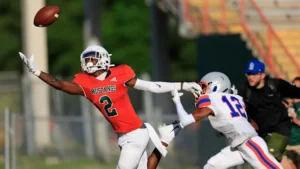
Tigers’ Tenacity: Swinney Champions Clemson’s Enduring Foundation Amidst Portal Volatility
In the ever-shifting landscape of college football, where the transfer portal has become a revolving door of talent and name, image, and likeness (NIL) deals often dictate player movement, Dabo Swinney stands firm. The head coach of the Clemson Tigers, a program synonymous with stability and sustained success over the past decade, has consistently voiced his belief in building from within, fostering a culture of long-term development, and prioritizing team cohesion over the transient allure of portal acquisitions. 1 As other programs navigate the complexities and, at times, the chaos of the transfer portal era, Swinney champions Clemson’s steadfast approach, touting the enduring strength derived from a foundation built on recruiting, development, and unwavering commitment.
For Swinney, the transfer portal, while a mechanism recognized within the current collegiate ecosystem, is not the primary avenue for building a championship-caliber team. His philosophy is deeply rooted in identifying and cultivating talent at the high school level, nurturing their growth within the Clemson program, and fostering a deep sense of loyalty and camaraderie. This approach, he argues, yields a more sustainable and resilient team fabric, one less susceptible to the unpredictable nature of players seeking immediate gratification or the highest bidder in the NIL marketplace.
Clemson’s historical success under Swinney lends credence to his philosophy. The Tigers’ consistent presence in the College Football Playoff, including two national championships, was largely built upon a foundation of homegrown talent, players who developed within the program’s culture and system over several years. This continuity fostered a strong team identity, a shared understanding of expectations, and a collective commitment to the program’s goals. Swinney believes that this organic growth and deep-rooted commitment are difficult to replicate through the often-fleeting connections forged via the transfer portal.
The “chaos” of the portal, as Swinney might characterize it, stems from the inherent uncertainty and rapid turnover it can introduce to a program. Teams heavily reliant on the portal may experience significant roster fluctuations year to year, making it challenging to establish a consistent team identity and build the deep trust and understanding that often separates good teams from great ones. The constant influx and efflux of players can disrupt team chemistry, create positional logjams, and potentially lead to a fractured locker room environment if not managed meticulously.
Furthermore, Swinney’s perspective likely considers the evaluation process associated with transfer portal acquisitions. While the portal offers access to experienced players, their fit within a new program’s culture, scheme, and locker room dynamic is not always guaranteed. The track record and personality of a high school recruit are often more extensively vetted through years of observation and relationship building. Relying heavily on the portal introduces an element of the unknown, a gamble on whether a player’s previous success and skillset will seamlessly translate to a new environment.
In contrast, Clemson’s emphasis on high school recruiting allows the coaching staff to identify players who not only possess the requisite athletic talent but also align with the program’s values and culture. The multi-year development process allows coaches to mold players to their specific schemes, instill the program’s principles, and foster leadership from within. This patient approach, while perhaps not yielding immediate fixes to positional needs, aims to create a more deeply ingrained and sustainable foundation for long-term success.
Swinney’s stance does not necessarily imply a complete disregard for the transfer portal. He has acknowledged that in specific circumstances, when a crucial need arises that cannot be adequately addressed through high school recruiting, the portal can serve as a supplementary tool. However, this approach is typically measured and targeted, focusing on identifying players who are not only talented but also possess the right character and fit for the Clemson program. It is a strategic supplementation, not a foundational building block.
The stability that Swinney touts extends beyond just roster continuity. It encompasses the program’s unwavering commitment to its core values, its consistent coaching staff, and its clearly defined culture. In an era where coaching changes and program philosophies can shift rapidly, Clemson has maintained a remarkable level of consistency under Swinney’s leadership. This stability provides a bedrock for both recruited players and their families, offering a sense of security and a clear pathway for development within a well-established system.
Moreover, Clemson’s approach often emphasizes the importance of player retention. By fostering a positive and developmental environment, the program aims to minimize player attrition, ensuring that the talent acquired through recruiting remains within the program for the entirety of their collegiate careers. This focus on retention stands in stark contrast to programs that may experience significant roster turnover due to players seeking more playing time or lucrative NIL opportunities elsewhere.
The debate surrounding the optimal approach to roster building in the transfer portal era is likely to continue. There is no single formula for success, and different programs will adopt strategies that best align with their resources, philosophies, and circumstances. However, Dabo Swinney’s unwavering belief in the power of stability, built through high school recruiting and internal development, offers a compelling counter-narrative to the perceived necessity of heavy reliance on the transfer portal. His continued success at Clemson serves as a testament to the enduring value of a strong foundation, cultivated over time and rooted in a commitment to long-term growth over short-term fixes. In the “chaos” of the portal, Swinney sees Clemson as an anchored vessel, weathering the storms with a steadfast belief in the enduring strength of its deeply ingrained principles and the talent it cultivates from within.





